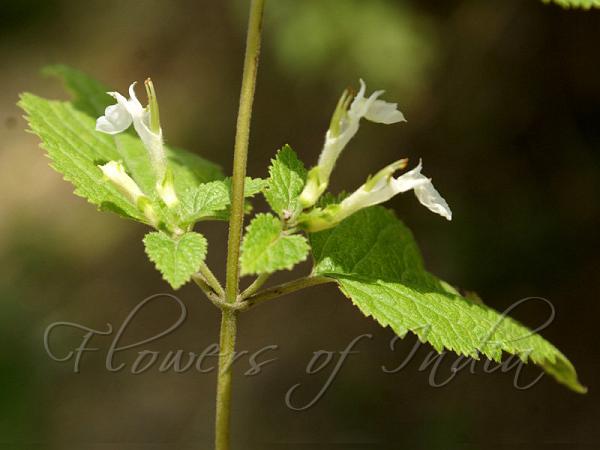|
| Himalayan Germander |
|

|

| File size | 81847 |
| Original date | 6/24/10 1:58 AM |
| Resolution | 800 x 600 |
| Flash | Flash did not fire, auto |
| Focal length | 70.0mm |
| Exposure time | 1/160s |
| Aperture | 9.0 |
| Focus Distance | |
| Metering Mode | Multi-segment |
| Camera make | SONY |
| Camera model | DSLR-A100 |
| Sensor type |
|
|
|
|
Photo: |
Botanical name: Teucrium royleanum Family: Lamiaceae (Mint family)
Synonyms: Teucrium edelbergii
Synonyms: Teucrium edelbergii
Himalayan Germander is a perennial herb with a slender creeping rhizome.
It was named for John Forbes Royle, 19th century British botanist and
physician in India before returning to London as professor of materia
medica. Stems are few, erect, 15-50 cm tall, obtusely quadrangular,
usually not branched, with short hairs. Leaves are few, 3.5-5.5 x 1.5-4
cm, regularly ovate or oblong-ovate, heart-shaped to rounded-flat at the
base, pointed at the tip, finely toothed, carried on 1-2.5 cm long leaf
stalk. Flowers are borne in stalked in the axils of upper leaves, and at
the end of branches. Stalk carrying the cyme is 0.5-2 cm long, with
flowers few to several. Bracts are linear, longer than flower-stalks.
Sepal cup is 4-5 mm long, 2-lipped, pale greenish-white, bell-shaped.
Upper lip is 3-toothed with middle tooth ovate long-pointed, clearly
larger than laterals. Lower lip has 2 narrow lanceshaped upcurved teeth.
Flowers are white, greenish white, or cream, 1-1.3 cm, finely glandular
hairy. Flowers are like 2-lipped flowers of the mint family, but with the
upper lip missing. The lower lip is 5-lobed. Middle lobe of the lip is
spreading-deflexed. Nutlets are about 1.5 x 1.1 mm. Himalayan Germander is
found in the Himalayas, from E. Afghanistan to Pakistan, Kashmir, NW India
and Nepal, altitudes of 1300-2800 m. Its is usually seen growing in shady
places among rocks. Flowering: May-September.
| Identification credit: Gurcharan Singh | Photographed in Mohra near Uri, Kashmir. |
• Is this flower misidentified? If yes,